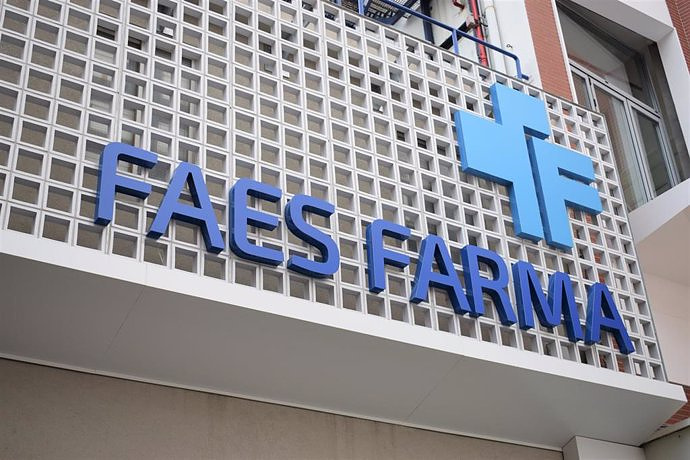Doubts maintained their positive behavior in the second quarter
MADRID, 28 Sep. (EUROPA PRESS) -
The Spanish Mortgage Association (AHE) has verified that the doubtfulness of the financial sector maintained its positive path in the second quarter of the year thanks to the reactivation of the liquidation operations of problematic assets after the stoppage caused by the pandemic.
However, as revealed in its latest quarterly report, the downside risks in activity arising from existing geopolitical tensions, inflationary pressures in the shopping basket and the normalization of interest rates "augurs a scenario of deterioration in the credit quality of the portfolios that possibly requires increasing the allocation of provisions throughout the current year".
For the time being, the rate hike by the European Central Bank (ECB) has not resulted in a reclassification of loans as non-performing. In the second quarter, the resident private sector doubtful loan rate fell below 4% for the first time since 2008, to 3.9%, compared to 4.2% in the first quarter and 4.4% in the same period of one year before.
Non-performing exposures contracted by 11.6%, to 47,916 million euros, while the outstanding balance experienced a slight increase of 0.2%, which places the volume of the portfolio at 1.23 trillion euros.
The doubtful asset ratio of financing for house purchase stood at 2.7%, down from 2.9% in the previous quarter and 3% a year earlier. The doubtful balance fell by 11.5%, to 13,188 million euros, reaching a minimum since 2008.
The rate of doubtful loans for housing renovation stood at 4.5% (compared to 4.8% in March and 5.4% a year earlier), while the consumer loan portfolio reduced the doubtfulness to 4.6%, compared to 4.9% in the previous quarter and 5% in the previous year.
Regarding the portfolio of companies, the productive activities improved their ratio of doubtful assets to 4.6%, compared to 4.8% in March and 5% in June 2021.
Within this segment, the improvement in real estate activities stands out, which placed its doubtful loan ratio at 4.1%, compared to 4.3% in the first quarter and the 4.6% observed a year earlier, thanks to the fact that the Doubtful balance fell 17.6% in the year and 8.1% in the quarter.
For its part, the doubtful loan rate in the construction sector stood at 8.4%, at the same level as in the previous quarter, despite the 2% reduction in the doubtful balance, due to the fact that the outstanding balance of the portfolio (denominator of the coefficient) has registered a drop similar to that of doubtful exposures (numerator in the ratio. The improvement was more notable compared to a year earlier, when the doubtful ratio stood at 9.1%, with a drop in the doubtful balance of 11%.
Despite this good performance of non-performing loans in the financial sector, the AHE foresees a deterioration in the credit quality of the portfolios that will require an increase in provisions during the current year, above the current rate of 45% maintained by the sector finance in total credit to the private sector.
In addition, he pointed out that the rise in interest rates by the ECB is translating into a significant increase in the fees that households with a current variable-rate mortgage must pay, after minimum levels.
This situation would have led the Government and banks to study some formula aimed at alleviating the financial burden of the most vulnerable households, the AHE has indicated.
In any case, the association has recalled that the vast majority of recently mortgaged households will remain oblivious to the situation of rising interest rates, given that in recent years there has been a greater concentration of fixed-rate mortgages.

 Exploring Cardano: Inner Workings and Advantages of this Cryptocurrency
Exploring Cardano: Inner Workings and Advantages of this Cryptocurrency Seville.- Economy.- Innova.- STSA inaugurates its new painting and sealing hangar in San Pablo, for 18 million
Seville.- Economy.- Innova.- STSA inaugurates its new painting and sealing hangar in San Pablo, for 18 million Innova.- More than 300 volunteers join the Andalucía Compromiso Digital network in one month to facilitate access to ICT
Innova.- More than 300 volunteers join the Andalucía Compromiso Digital network in one month to facilitate access to ICT Innova.-AMP.- Ayesa acquires 51% of Sadiel, which will create new technological engineering products and expand markets
Innova.-AMP.- Ayesa acquires 51% of Sadiel, which will create new technological engineering products and expand markets The PSOE is holding a Federal Committee this Saturday that will serve to close ranks with Sánchez so that he does not resign
The PSOE is holding a Federal Committee this Saturday that will serve to close ranks with Sánchez so that he does not resign The Ibex 35 closes the week at its highest since 2015 and is already looking at 11,200
The Ibex 35 closes the week at its highest since 2015 and is already looking at 11,200 RELEASE: Dogfy Diet leads in canine nutrition with revolutionary natural solutions
RELEASE: Dogfy Diet leads in canine nutrition with revolutionary natural solutions STATEMENT: Fernando Belasteguín Curarti ambassador in China
STATEMENT: Fernando Belasteguín Curarti ambassador in China How Blockchain in being used to shape the future
How Blockchain in being used to shape the future Not just BTC and ETH: Here Are Some More Interesting Coins Worth Focusing on
Not just BTC and ETH: Here Are Some More Interesting Coins Worth Focusing on UPV students build a prototype of a wooden house to move to Equatorial Guinea
UPV students build a prototype of a wooden house to move to Equatorial Guinea The UA opens the call for the Impulso 2024 Awards for the best innovative business initiatives
The UA opens the call for the Impulso 2024 Awards for the best innovative business initiatives ALI, virtual assistant from Alicante, internationally recognized by the OECD
ALI, virtual assistant from Alicante, internationally recognized by the OECD Retrópolis brings the golden age of video games and computing to the UPV
Retrópolis brings the golden age of video games and computing to the UPV A million people demonstrate in France against Macron's pension reform
A million people demonstrate in France against Macron's pension reform Russia launches several missiles against "critical infrastructure" in the city of Zaporizhia
Russia launches several missiles against "critical infrastructure" in the city of Zaporizhia A "procession" remembers the dead of the Calabria shipwreck as bodies continue to wash up on the shore
A "procession" remembers the dead of the Calabria shipwreck as bodies continue to wash up on the shore Prison sentences handed down for three prominent Hong Kong pro-democracy activists
Prison sentences handed down for three prominent Hong Kong pro-democracy activists ETH continues to leave trading platforms, Ethereum balance on exchanges lowest in 3 years
ETH continues to leave trading platforms, Ethereum balance on exchanges lowest in 3 years Investors invest $450 million in Consensys, Ethereum incubator now valued at $7 billion
Investors invest $450 million in Consensys, Ethereum incubator now valued at $7 billion Alchemy Integrates Ethereum L2 Product Starknet to Enhance Web3 Scalability at a Price 100x Lower Than L1 Fees
Alchemy Integrates Ethereum L2 Product Starknet to Enhance Web3 Scalability at a Price 100x Lower Than L1 Fees Mining Report: Bitcoin's Electricity Consumption Declines by 25% in Q1 2022
Mining Report: Bitcoin's Electricity Consumption Declines by 25% in Q1 2022 Oil-to-Bitcoin Mining Firm Crusoe Energy Systems Raised $505 Million
Oil-to-Bitcoin Mining Firm Crusoe Energy Systems Raised $505 Million Microbt reveals the latest Bitcoin mining rigs -- Machines produce up to 126 TH/s with custom 5nm chip design
Microbt reveals the latest Bitcoin mining rigs -- Machines produce up to 126 TH/s with custom 5nm chip design Bitcoin's Mining Difficulty Hits a Lifetime High, With More Than 90% of BTC Supply Issued
Bitcoin's Mining Difficulty Hits a Lifetime High, With More Than 90% of BTC Supply Issued The Biggest Movers are Near, EOS, and RUNE during Friday's Selloff
The Biggest Movers are Near, EOS, and RUNE during Friday's Selloff Global Markets Spooked by a Hawkish Fed and Covid, Stocks and Crypto Gain After Musk Buys Twitter
Global Markets Spooked by a Hawkish Fed and Covid, Stocks and Crypto Gain After Musk Buys Twitter Bitso to offset carbon emissions from the Trading Platform's ERC20, ETH, and BTC Transactions
Bitso to offset carbon emissions from the Trading Platform's ERC20, ETH, and BTC Transactions Draftkings Announces 2022 College Hoops NFT Selection for March Madness
Draftkings Announces 2022 College Hoops NFT Selection for March Madness



























